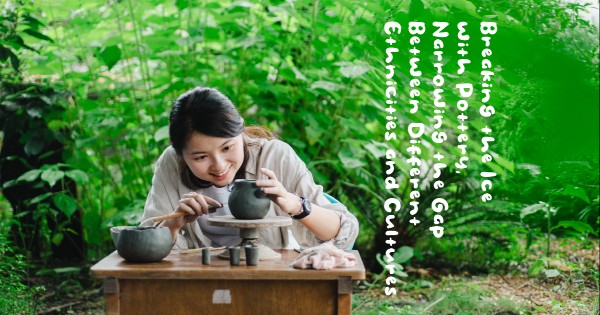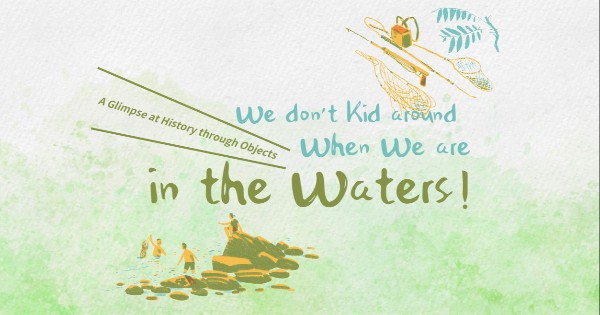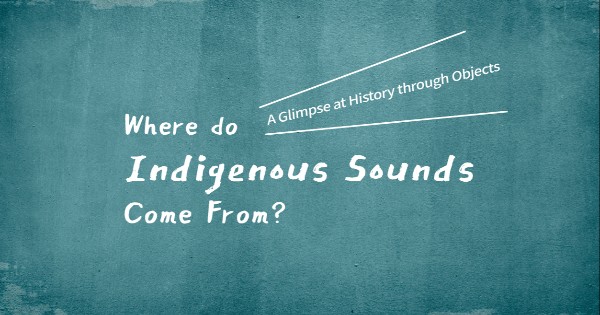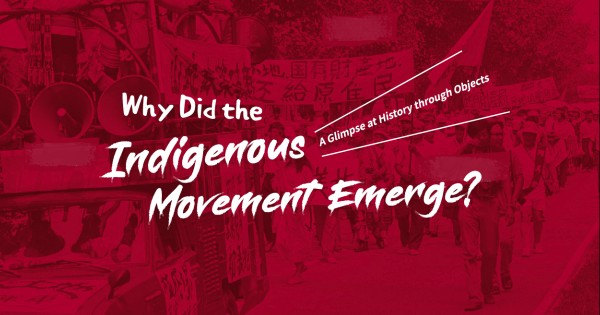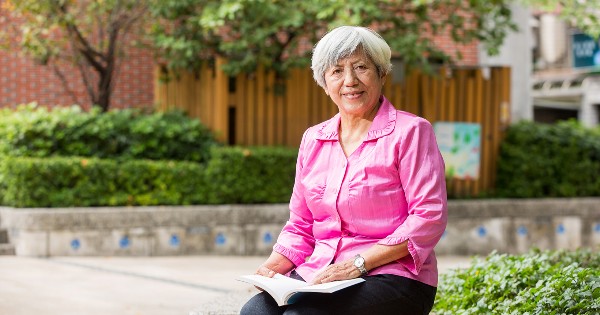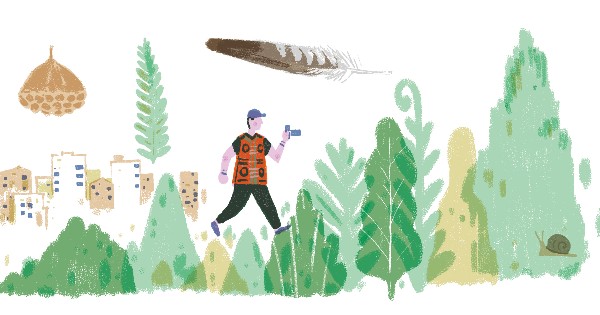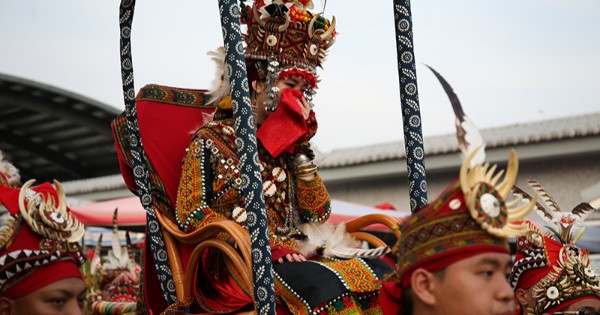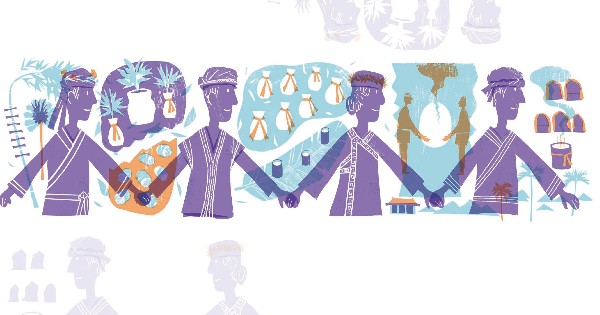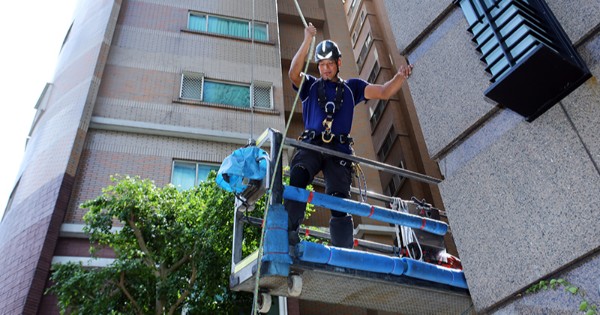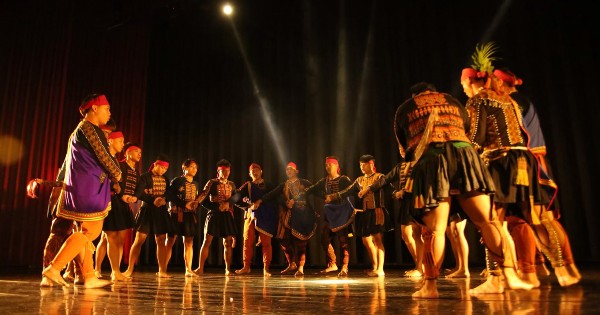2022-06-25
Breaking the Ice with Pottery, Narrowing the Gap Between Different Ethnicities and Cultures
Written by Chiu Mu-Jung; Photo credit: Lin Jing-Yi
What observations have you made making different potteries in the last two days?
The main difference is I learned to use my hand to make a concave body today. Yesterday, I made the ritual cup by first rolling out a sheet of clay and a base, and gradually shaping the cup with the combination. But today, I started with a clay ball and slowly dug the indentation so that the pottery is firmer in shape....
2021-12-07
A Glimpse at History through Objects | We don’t Kid around When We are in the Waters!
Written by Kuo Po-Jiun; Illustrated by Lin Jia-Dong; Translated by Chen Deh-I
Although the traditions of indigenous peoples seem to be fading, present hunters still bring millet wine as an offering to the ancestral spirits when they go on their hunts. This ritual is a way of notifying the spirits that the hunters will be hunting for food here. Culture is the way of life, and bits and pieces of tradition can still be found in the daily lives of indigenous peoples.
2021-10-05
Deciphering Ecological Knowledge | Plants are Incredibly Useful!
Written by Kuo Po-Jiun; Illustrated by Lin Jia-Dong; Translated by Ker Nai-Yu
Having spent their entire lives with nature, indigenous peoples developed their own ecological wisdom, allowing them to co-exist with the mountains using their knowledge, be it in response to climate change, animal behavior, or plant use. Considering the fact that supplies in the old days were not as abundant, plant resource applications in our ancestors' lives were critical, and could be discovered everywhere from food, clothing, housing, medicine to religion.
2021-08-03
A Glimpse at History through Objects | Where do Indigenous Sounds Come From?
Written by Kuo Po-Jiun; Illustrated by Ling Jia-Dong & Top Photo Group; Translated by Ker Nai-Yu
The Taiwan society is generally under the impression that indigenous peoples enjoy and excel at singing, but the reason indigenous peoples have such intimate relationship with music is due to the lack of a writing system in the past. Knowledge of life and messages regarding living, aging, sickness, death, clothing, food, housing, and transportation are passed on by word of mouth; each indigenous group thus developed their unique forms of sound expression and music culture. But where do these sounds come from? How have they gained attention and popularity?
2021-06-24
A Glimpse at History through Objects | Why Did the Indigenous Movement Emerge?
Written by Kuo Po-Jiun; Illustrated by Lin Jia-Dong, Shutterstock; Tanslated by Lai Yu-Hsuan
“Return my land!” “Give us our life back.” “Stop calling us ‘savages’!” “We do not need your sympathy, but to take us seriously.” These slogans of the indigenous movements in the 1980’s have demonstrated that indigenous peoples back then only asked for their basic human rights from the government and the society. Different from the diversity and convenience in the modern digitalised world, how did the indigenous movement activists 40 years ago organise people and develop social movement? Let us have a look!
2020-12-04
Faisʉ.Mʉkʉnana | Literatrary Writing, the Best Cure for a Homesick Tsou Woman
Written by You Tai; Photo credit: Lin Sia; Translated by Ker Nai-Yu
“I write about everything in our indigenous community, the good and the bad, so that further down the road, if people want to learn about the history of our community, they will have something to go by.”
2020-09-23
Wildlife Observations in Modern Communities | Ecology Sketches by a Paiwan Young Man
Written by You Nian-Xiu; Illustrated by Lin Jia-Dong; Translated by Lin Shih-Fen
Paiwan youth Vuluk Pavavaljung from Pingtung County’s Shandimen Township has always been interested in insects, and eventually chose to study entomology in university. Combining his professional knowledge with the experience of living in his indigenous village, Vuluk shares his observations on community flora and fauna on his Facebook fanpage “The Indigenous Biology Log”.
2020-06-21
The Six Stages of Rukai Romance
Written by Tu Xin-Yi; Translated by 陳德怡 Deh I Chen; Photo credit: Chang Ta-Chuan
The traditions of a people include the thoughts, culture, systems, and ways of doing things that have been passed down from generation to generation and have intangible constraining power and impact on society. For indigenous peoples, tradition is like a piece of life-saving driftwood that connects them to their roots as they face the brutal assaults of foreign cultures. However, tradition itself is constantly oscillating between “remaining the same” and “changing with the times”.
2020-04-23
Tefi Takano - Skills and Inspirations Deep-Rooted in Indigenous Cultures
Written by You Tai; Translated by 柯乃瑜 Nai-yu Ker; Photo credit: Tefi Takano and Hsieh Xiao-Ming
Tefi Takano draws infinite inspirations of colors from the lush green kalotungang (Mt. Kingkong), the blue Pacific Ocean, and the coastal rice terrace lining between the mountains and the ocean. One professional model after another strut down the catwalk in front of the Dongli Train Station during the autumn harvest season, with the golden waves of rice in Yuli Township, Hualien County as backdrop...
2019-11-29
The Southwest Region of the Island Home to the Southern Taiwanese Plains Indigenous Peoples
Written by Chen Yi-Zhen; Translated by 陳德怡 Deh I Chen; Illustrated by Lin Jia-Dong
Who once lived in the vast plains of Taiwan's southwest region? The southwestern plains were once occupied by the Taiwan Plains Indigenous Peoples, yet their history has been lost in time. Fortunately, historical documents studies and research offer more information to the descendants seeking their roots, as the stories of their ancestors are gradually uncovered.
2019-10-23
Building Exterior Services Technician, Yang You-Lin | The Spiderman Hanging between Edifices
Written by You Nian-Siou; Translated by 賴諭萱 Yu Hsuan Lai; Photo credit: Yang You-Lin/ Wong Ting-Yao
With remarkable aplomb, Yang You-Lin climbs over the parapets of high-rise buildings and descends vertically. The only means of support are two ropes connected to an anchor on the roof. He sometimes stops to clean a facade; other times he loosens the rope grab to go down slowly. Whenever he changes height of ascent or descent, he has to readjust the safety harness to the right position. When he lands, he is soaking wet. This is not a movie special effect, but Yang’s work routine. He is a building exterior services technician, the so-called “Spider-Man” in Taiwan.
2019-09-25
Performance of Craftsmanship Class for the Indigenous Peoples in Laiyi Senior High School on International Stage
Written by Chao Hsin-Ning; Translated by Sally I.C. Wu; Photo credit: 來義高中原住民藝能班
Through either modern dance or traditional indigenous dance, students are able to demonstrate their best efforts.
